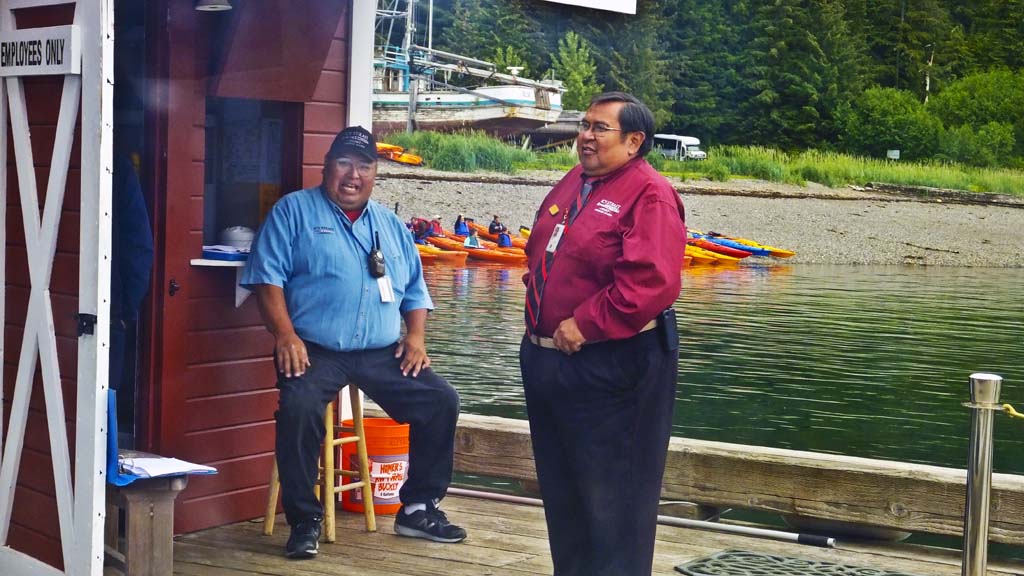
The aboriginal inhabitants of Alaska don’t need a Big Bang Theory to explain the creation of the world.
They’ve got a Big Bird Theory that’s even more bizarre because it claims the universe we know today is thanks to a crafty raven who liked toilet jokes.
Their creation story that’s unlike any you’ve ever heard unfolds in a stage show that’s the highlight of a visit to Hoonah, Alaska on board Oceania Cruises’ small ship Regatta. Passengers who come ashore for the show are not only christened honorary members of one of the local clans, but get the chance to join in a tribal dance at their stage show.
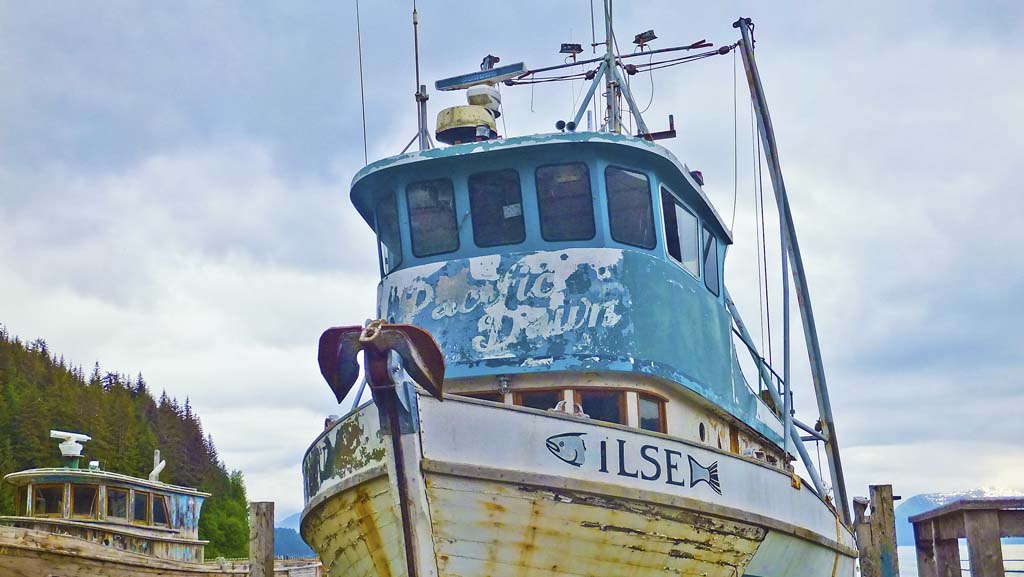
If you haven’t heard of the village of Hoonah, or of Icy Strait Point, you’re not alone. It’s a relatively new addition to the cruise ports in Alaska. Only 30 miles west of Juneau across the mountainous Inside Passage, it’s generally only visited by smaller ships like the 685 passenger Regatta. Too many visitors in a day would overwhelm Hoonah, which has a full time population of less than 800 hearty souls who somehow have the stamina to adapt to winter snowfalls that can bury homes.
There’s no cruise dock, so we tender in to the fishing pier of a complex that used to be a cannery. It’s not operating any more: When’s the last time you had canned salmon? The packing plant closed in the 1950s as fishing boats started freezing their catches.
Today the sprawling building is a museum and the packing plant has become a mall with the usual Alaska T-shirt and craft shops while the dock caters to sport fishing boats. It’s also the place to rent a kayak for a paddle along the shore, that’s a great place to watch eagles in action.
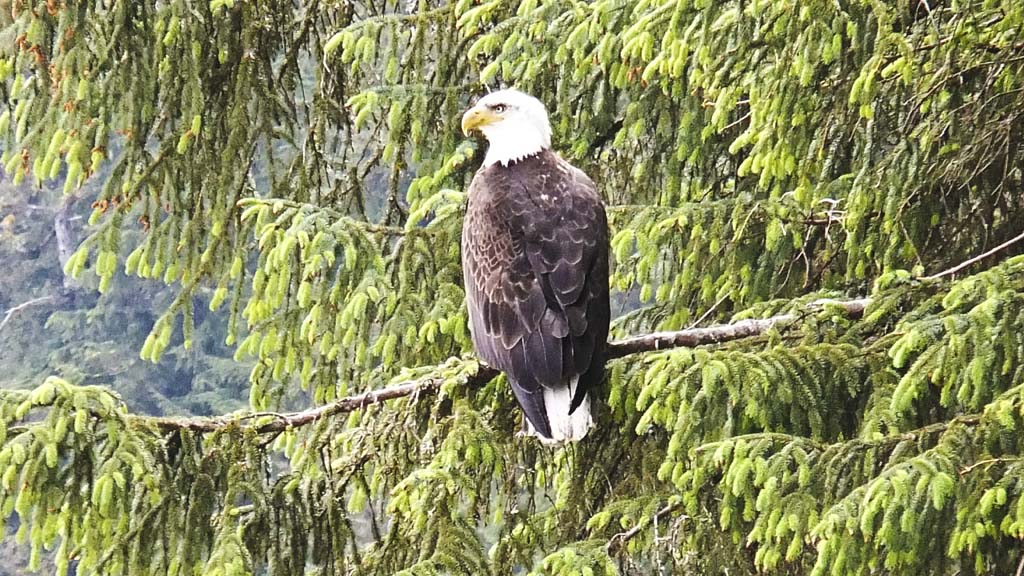
I opted for a ride on an oversized golf cart they call a tour train for a ride along the beach, where magnificent bald eagles perch on the limbs of evergreens waiting to swoop into the water when a fish swims close to the surface. The driver is a local elder who runs tours here in the summer and spends the winter in Juneau, where he has a second home and a good job driving a delivery truck.
A lot of the people who call Hoonah home have similar split lives, it turns out. Winters here can be brutal with up to 20 feet of snow stacking up before the spring thaw. But then again, these are people who know how to cope with ice and snow.
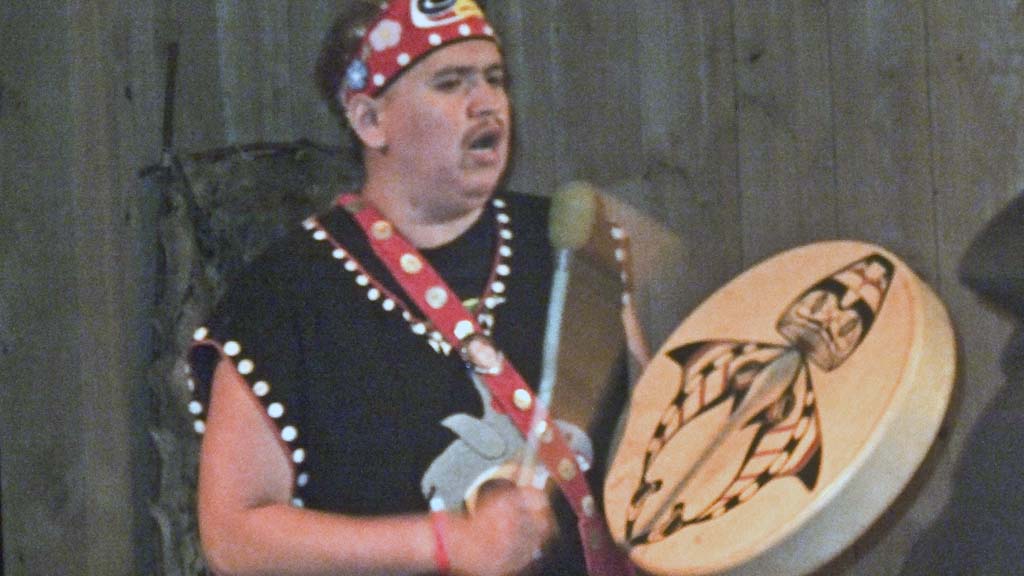
They’re a branch of the Tlingit people who date themselves from the time of the Ice Age. It was always a small world: Tlingit means The People. They knew of no other people beyond the narrow confines of coastal Alaska. But they had their own tribes. Clans were part of the raven or eagle lineages of the people, with sub-tribes of sharks, turtles, otters and brown bears. To avoid the problems that come with intermarriage, historically ravens could marry only members of the eagles and vice versa.
The story of the Tlingit gets evern more interesting as folks wearing elaborate hand carved masks and intricately beaded robes escort us into an auditorium where a presentation of their remarkable– or blasphemous depending on your religion– story of creation is about to begin.
Lights out and the universe unfolds in the dark: the way it was before the white Raven tricked the gods into providing the sun, the moon and the stars.
I won’t spoil the plot but some of the highlights include the bird tricking a god so he can open up a box to release the stars into the night sky. Another scene that revolves around a well-known waste product but results in the seas filling with fish. After all is efforts, the Raven ends up black.
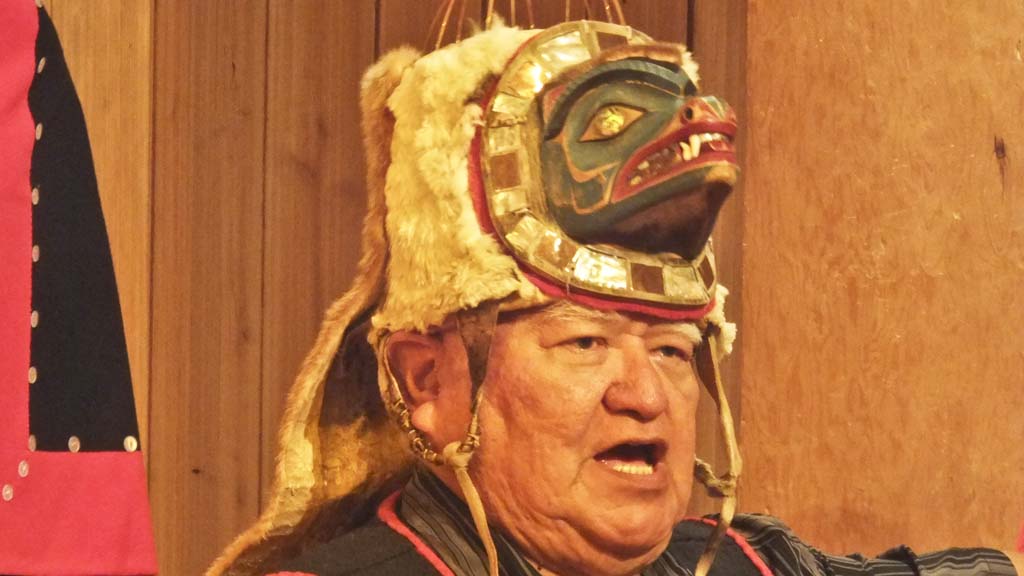
At the end of the show, I got a chance to chat with an elder of the village. A friendly guy who wears a traditional hand carved mask of the head of the otter clan.
His cape was studded with mother of pearl buttons, that come machine made these days but traditionally were hand carved from shells by people who became adept at intricate carving or painting in the long months of winter darkness.
The Hoonah Tlingit have only been living on this island for about a century, he explained. They had to move here from their aboriginal home land which was an area at the edge of the Mendenhall Glacier, whose melting flooded their village.
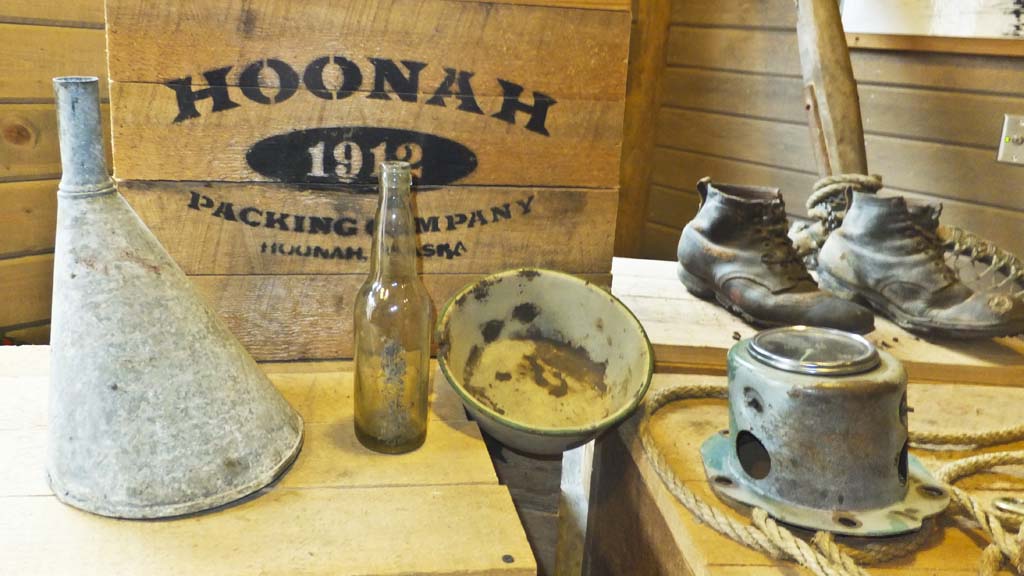
He lives here year round and despite snowfalls that can cover alll the buildings on the island, people manage to shovel their way through drifts to get around. The school in Hoonah has never declared a snow day, he said proudly.
While his wife and children have all taken up crafts during the winter, he never developed his artistic side, the otter said.
So what does he do when there’s a lot of time to kill in the winter?
The locals have developed a great lending library system for DVDs, he said. In the fall, people go to Juneau and buy boxed sets of all the hit TV shows and the discs get passed around so everyone gets a chance to see them.
So what’s his favorite show?
No question: “Big Bang Theory.”
